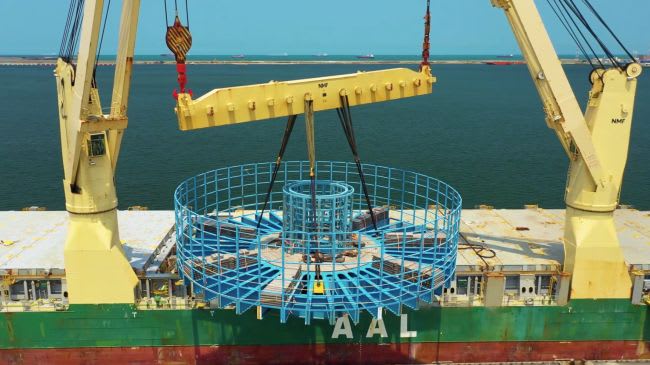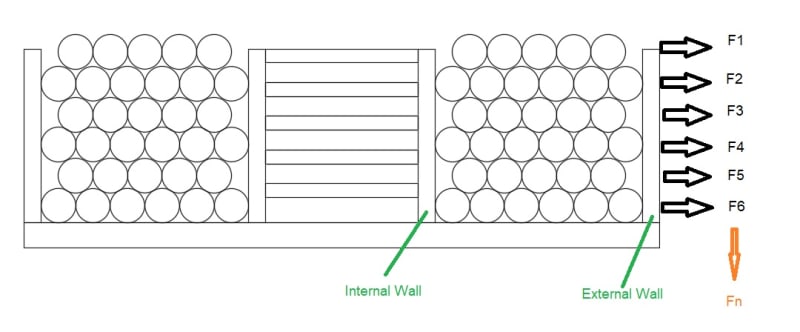BEMPE16524
Mechanical
Hello Everyone,
I'm trying to figure out the acting force on the the wall/fence of a cable carousel as in following image:

I tried to look for a design standard but so far I couldn't find one. So, here is my assumption:

n : vertical number of cable layers
nh : number of cable turns on each layer
M : total cable mass on each turn
Mnh : Mass of cable on each horizontal layer, i.e; M1, M2, M3, etc...
g : gravity
I know that there will be a cable transition between each layer. So, i'm assuming that 'nh' for all layers will be the same (the image above is simplified).
F1 = 0 N
F2 = 1 x (M1+M2+M3+M4+M6+M6)/2 x g
F3 = 2 x (M1+M2+M3+M4+M6+M6)/2 x g
F4 = 3 x (M1+M2+M3+M4+M6+M6)/2 x g
F5 = 4 x (M1+M2+M3+M4+M6+M6)/2 x g
F6 = 5 x (M1+M2+M3+M4+M6+M6)/2 x g
Fn = (n-1) x M/2 x g
Note:
1. I divided total mass, M by 2 as I'm assuming external and internal wall will share the force together.
2. There will be a safety factor to be applied too base on standard offshore structures/machineries.
Is there any other things I have to take into consideration?
R.Efendy
I'm trying to figure out the acting force on the the wall/fence of a cable carousel as in following image:

I tried to look for a design standard but so far I couldn't find one. So, here is my assumption:

n : vertical number of cable layers
nh : number of cable turns on each layer
M : total cable mass on each turn
Mnh : Mass of cable on each horizontal layer, i.e; M1, M2, M3, etc...
g : gravity
I know that there will be a cable transition between each layer. So, i'm assuming that 'nh' for all layers will be the same (the image above is simplified).
F1 = 0 N
F2 = 1 x (M1+M2+M3+M4+M6+M6)/2 x g
F3 = 2 x (M1+M2+M3+M4+M6+M6)/2 x g
F4 = 3 x (M1+M2+M3+M4+M6+M6)/2 x g
F5 = 4 x (M1+M2+M3+M4+M6+M6)/2 x g
F6 = 5 x (M1+M2+M3+M4+M6+M6)/2 x g
Fn = (n-1) x M/2 x g
Note:
1. I divided total mass, M by 2 as I'm assuming external and internal wall will share the force together.
2. There will be a safety factor to be applied too base on standard offshore structures/machineries.
Is there any other things I have to take into consideration?
R.Efendy
